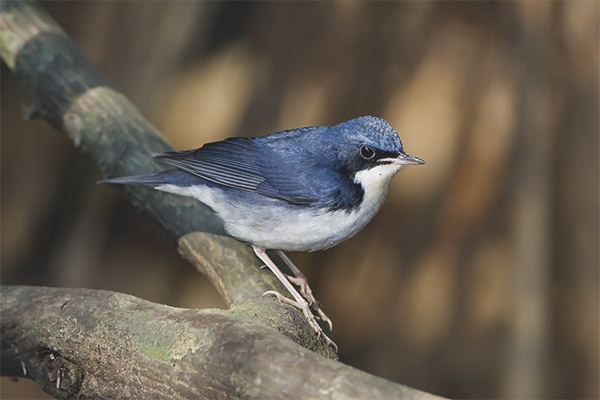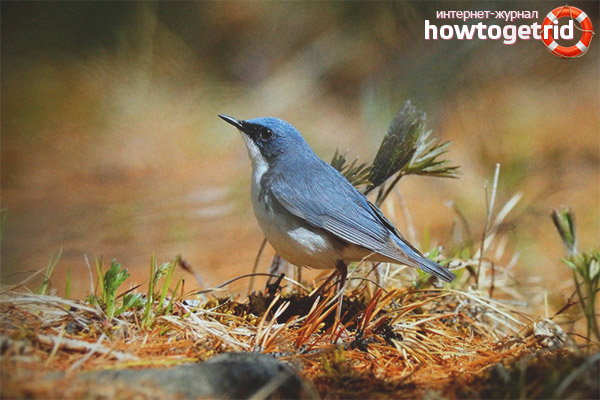The content of the article
All representatives of the nightingales are singing birds. To this day, it is not known for what reasons the individual learned its name. It is clear only that the ancient Greek word "nightingale" translates as Lucini. This name was called women with excellent voice. But no more about the lyrics, let's explore all aspects related to the variety of birds, in turn.
Description
- A nightingale is a bird that brings happiness. It has long been believed that these individuals bring well-being, comfort and mutual understanding to the house. Eastern people still believe in it. The voice of individuals was especially popular, partly because of this, birds were caught and sold. Feathered friends settled at the sheikhs, emperors and other nobles.
- Some birds were supplied to overseas merchants, others were brought to domestic noblemen. At the beginning of the 19th century, it became forbidden to catch these birds, but only in some regions. Due to the fact that the number declined, it was necessary to urgently recover.
- Solovyov is recognized not only by the vocal cords, but also by external characteristics. So, on the body they grow up to 27 cm, which is quite a lot for such a bird. Body weight hardly exceeds 25 grams. A distinctive feature is the plumage of gray outflow with blue inclusions. It is not as plain as a sparrow.
- The upper part of the body is covered with blue feathers, in the lower section (abdominal cavity, brisket) white features are noticed. The side parts are 50 by 50, that is, blue-white. The wings are brownish in color, the tail is elongated, pigmented by dark blue.
- The females are painted not so brightly, they are almost completely brownish, only in the upper part a blue spot is observed near the flight feathers. All birds, regardless of gender, have black beaks, as well as small eyes.
- The neck is mobile, strong. The cut on the tail is straight, when the bird is sitting, it falls. If we count these individuals as a family, then the situation is ambiguous. Some experts claim that the nightingales belong to the flycatcher. Others insist on thrushes.
Lifestyle
- These birds are cautious and try not to get close to humans. They live preferably in calm and secluded places. Love forests, light forests. Relax in the sun on the meadows, not in the shade.
- Birds are active at night or at dawn. During the day they are almost not audible. At night and at dusk, birds feed, mate, coo. They live in couples or singly.
- Depending on the region where individuals live, they can be sedentary or wandering. In the vastness of our country, singing birds migrate to Africa with the arrival of cold weather. Often, birds spend the winter in the Congo.
- In whatever area the nightingale dwells, it will always choose deciduous forests. Often, represented individuals prefer a densely growing lower tier. Which consists of shrubs and is located near water.
- In addition, such a habitat will most likely be in lowlands. Only in rare cases, these birds live in the mountains, on dry hills and sand dunes.
Nutrition
- The basis of the diet of individuals includes predominantly protein foods. The menu is also complemented by products of plant origin.Birds often eat nuts, plants, berries, seeds, and turnips.
- As for food of animal origin, nightingales are very fond of ants, their eggs, worms, spiders, beetles, caterpillars and maggots. Also, birds often eat small invertebrates and insects. Nightingales can catch butterflies and moths even in flight.
Mating season
- The mating season in birds usually falls in May. As soon as the birds arrive in their native lands, they wait until the buds start to bloom and the first leaves appear. Only in such a favorable environment, individuals begin to sing.
- Males make loud trills that are dedicated to absolutely all females. As soon as the pair is formed, the male begins to sing his darling quieter and more enticing.
- During the mating season, the males not only sing loudly and beautifully, they also widely flap their wings. After the pair mated, they start building a home. The female builds a nest herself and she also takes care of it.
Nightingales are one of the most popular birds in our country. They delight us with their spring singing. According to their trills, we can judge that the long-awaited spring has already arrived.In adults, parental instincts are well developed, so after the birth of chicks into the world, parents carefully monitor them.
Video: Blue Nightingale (Luscinia cyane)












To send